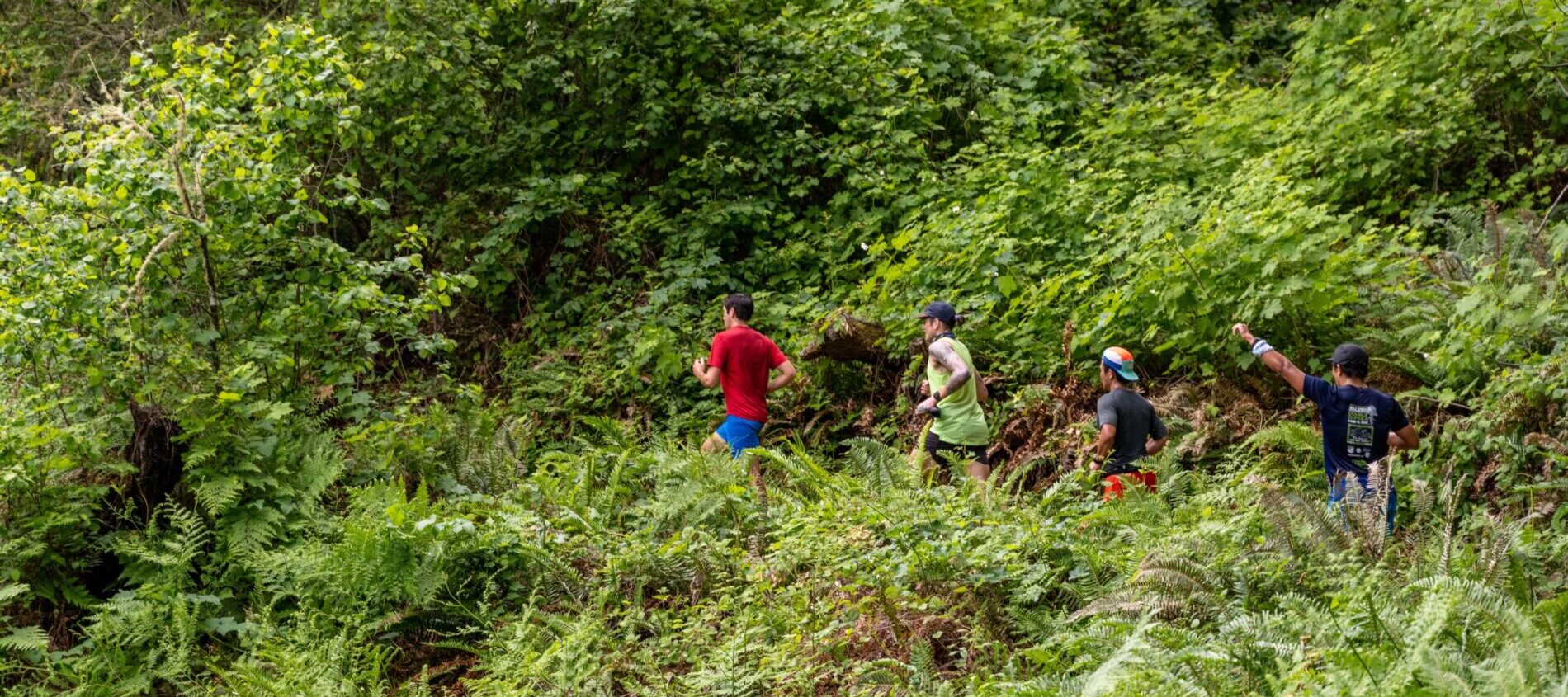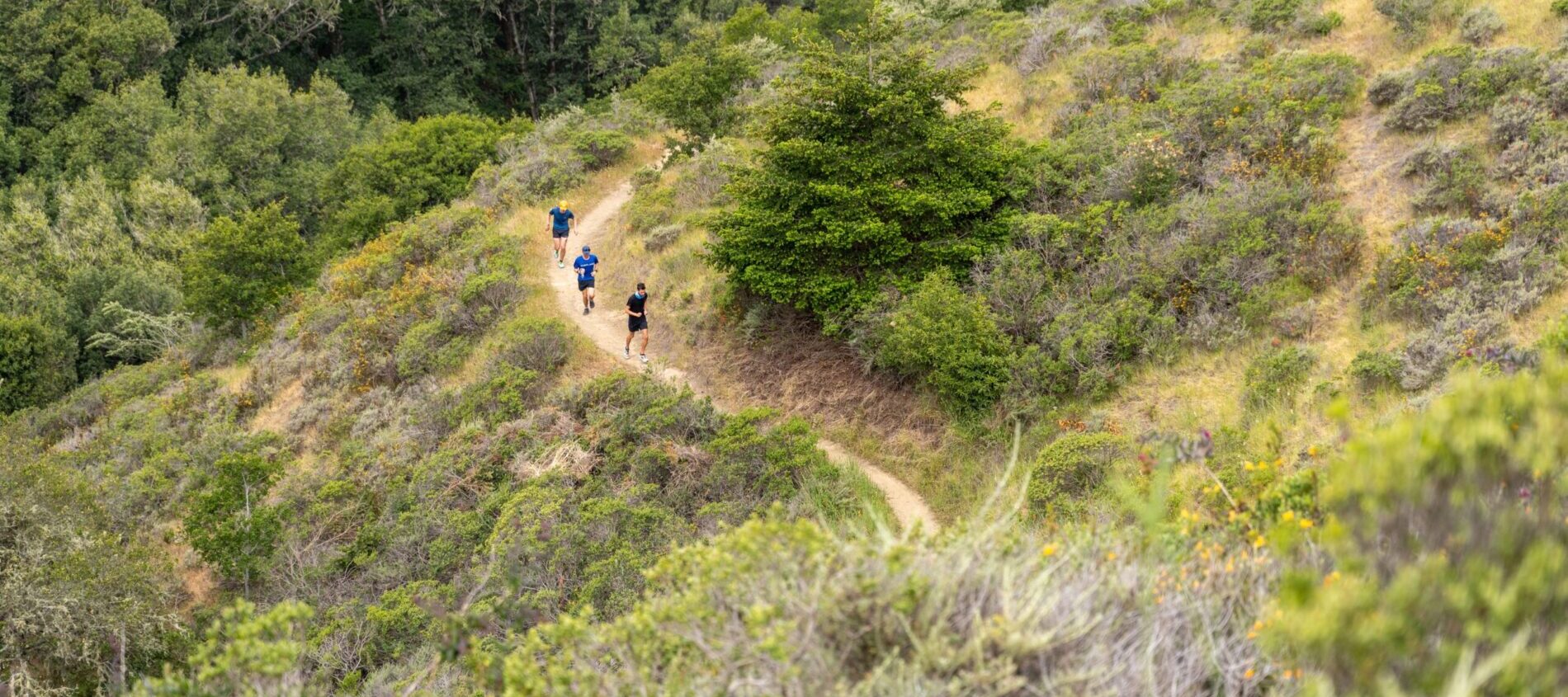
In our new Trail Running 101 series, we’ll be covering just about everything you might want to know to get started in the sport, as well as tips and tricks for experienced runners to make it more enjoyable. This is the first part of the series, so stay tuned for more.
Intro
Trail running — it’s only one word away from road running. Is it really that different? Yes and no.
What many runners love about running is its simplicity. You don’t need much gear. You can do it alone or with a group. You can be competitive, or not. You can go running just about anywhere. All those things are true for both trail running and road running. So what exactly is trail running? How is it different from road running? What do you need to know to get started?
Trail running is simply running, but not on pavement. That means it’s usually closer to nature — maybe in a forest, through the desert, or up a mountain. You can trail run on a smooth gravel path with few hills or you can trail run up a steep mountain where the path is barely visible among the rocks.

Is trail running harder than road running?
Running on a trail, you may encounter significant gains and loss in elevation. You may have to navigate rocks, roots, fallen trees, or other obstacles. You might run through loose, slippery gravel or sticky, heavy mud. All this requires a different kind of effort, and usually at a slower pace than running on a smooth road or sidewalk. Going trail running also usually means you’re farther away from help if something were to happen — like encountering an injury or a storm. That means trail running requires thought and preparation. Maybe even carrying more with you on your run.
Why would you want to try trail running?
Trail running can take you places road running never will. You may have to work harder to get there, but the views, the quiet, the solitude, and the sense of freedom and accomplishment that come from following a trail out into the wild seem to hook runners.
Do I need different gear to try trail running?
The short answer is, not at first. If you’re curious about trail running, you can go ahead and give it a try with the running shoes and clothes you already have. Road running shoes may feel a bit slippery on rocky terrain, especially if it’s wet. Choosing a trail that’s not too steep or rocky for your first trail run is a great idea, especially if you’re wearing road running shoes. Aim for a shorter distance than you’re used to running at first, and just watch your step along the way. If you like it and want to do more, then you might want to look into buying a few more trail-specific items.
The main piece of gear you will probably want as you dive into trail running is a pair of trail running shoes (more on that below). If you like running longer distances, a hand-held water bottle holder, waist belt, or running vest can help you carry the fuel, water, and extra layers you’ll need to be safe. Also, trekking poles can help on steep, uneven terrain — and are even allowed in many longer trail races.

How are trail running shoes different?
Trail running shoes are designed specifically to protect your feet from the hazards of off-road running, and to help your feet grip varied terrain. If you compare a pair of trail runners to a pair of road shoes, the first thing you’ll probably notice are the larger lugs on the soles for traction on trail surfaces. Sometimes the soles are made of a softer, stickier type of rubber that’s less likely to slip on a rock, which also might wear down a bit faster than the harder sole of a road shoe when used on concrete / pavement.
Trail running shoes come in a wide variety of styles, from minimalist silhouettes to thicker, wider versions. Most of them are a bit heavier than road running shoes and have reinforced sidewalls to keep them from tearing on rocks, toe “bumpers” to protect your toes, and/or rock plates to help keep the bottoms of your feet from feeling the impact of every sharp little rock you step on.
Where to run
What makes a good running trail? That might be a matter of opinion, but a good place to start is looking for hiking trails. Most places you would hike can also be run. Apps like Trail Run Project and onX Backcountry can help you find a nearby trail with the right amount of distance and elevation gain for your preferences. Trail running guidebooks can also be a great resource, as well as running clubs or Meetup groups.

5 tips for getting started trail running
(1) Adjust your expectations and pace. As we said above, running on a trail usually takes more effort. A good way to help you transition is to think in terms of time instead of miles. For example, instead of aiming for, say, 5 miles, start by running 15 minutes on a trail before turning around to head back. Eventually, you’ll get an idea of your trail running pace on different terrain versus your road pace.
(2) Carry a few emergency items on long runs the same way you would for a hike. Think: water, snacks, a map, an extra layer, headlamp, and maybe even a mini first aid kit. And always know your route.
(3) Remember, walking is a big part of trail running. Even the pros do it. If you’re up against a steep hill, shift your gears down to power-hike mode and then pick up the running pace again if you want to when the trail evens out.
(4) Pay close attention to the trail about 10 to 15 paces ahead of where you’re running, rather than just what’s at your feet. This helps your body prepare for upcoming obstacles. Concentrate on picking up your feet — and don’t get discouraged if you fall. It happens to everybody. It’s part of the sport.
(5) Take shorter steps, especially going downhill. And don’t be afraid to stick your arms out for balance. You see pro trail runners do this all the time.

The Bottom Line
Trail running may take a little getting used to if you’re coming from road running. But it can reward you by taking you to new and exciting places — both within and outside yourself. You may find that shifting the focus from specific speeds and distances to a sense of adventure and discovery to be well worth the adjustment.
Stay tuned for the rest of our Trail Running 101 series, where we’ll discuss just about everything you may need to get started and continue enjoying this sport.
